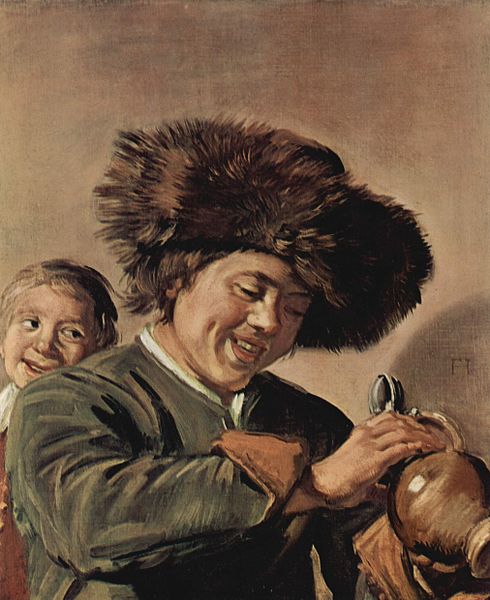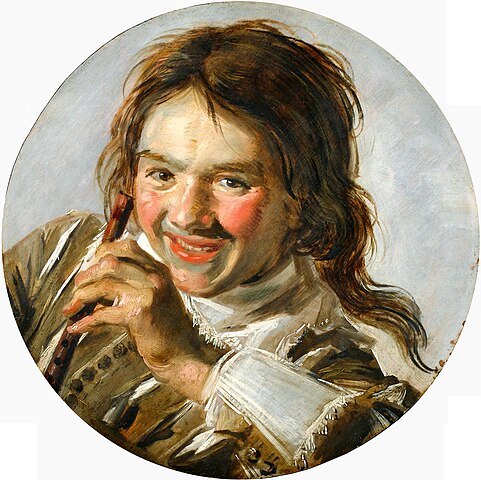
Thammasat University students who are interested in art, European culture, the Netherlands, history, sociology, and related subjects may find a new Open Access book available for free download useful.
Frans Hals: Iconography – Technique – Reputation is edited by Norbert Middelkoop and Rudi Ekkart.
Dr. Norbert Middelkoop is Senior Curator of Paintings, Prints and Drawings at the Amsterdam Museum in Amsterdam, The Netherlands.
Dr. Rudolf Ekkart is former director of the Netherlands Institute for Art History.
The TU Library collection includes other research about different aspects of the art of Frans Hals.
A foreword to the new book notes:
The reputation of Frans Hals (1582/83–1666) has experienced high peaks and deep troughs. In his own time, his innovative, ‘rough’ painting style was recognized by authors of travelogues and fellow artists. But his work went swiftly out of favour after his death. Hals fell into obscurity: he was no longer included automatically in historical surveys of seventeenth-century Dutch art and hardly any research was done into his life and work.
This situation persisted for a long time, only taking a turn for the better around the mid-nineteenth century, when the French journalist and art critic Théophile Thoré-Bürger (1807–1869) rediscovered Hals. In his wake, the artistic community – this time modern artists – once more took up the painter’s work and Hals came in for renewed study.
Yet even with the involvement of these figures, Hals’s reputation still lagged behind those of Rembrandt and Vermeer, which had been rising sharply since the nineteenth century; the same was true of scholarship on Hals in comparison with the work on Rembrandt and Vermeer.
As described in the introduction to this edited volume, which surveys the current state of Hals scholarship, the Frans Hals Museum has carried out a great deal of research into its namesake since its foundation. Nevertheless, many questions remain, to which Hals specialists have yet to find unambiguous answers. The Frans Hals Museum – holder of the largest and most important collection of Frans Hals paintings in the world – therefore decided to establish a scholarly platform, with the aim of initiating, stimulating, collating and disseminating art historical and material-technical research into Frans Hals.
Publications in the accompanying Frans Hals Studies series will be an important means of enabling this.
A publisher’s description of the book explains:
Frans Hals (1582/83-1666) is rightfully considered one of the most important seventeenth-century Dutch painters. His portraits are admired for their virtuoso brushwork and their seemingly spontaneous character. This volume, with fourteen contributions by twenty-six specialists on Hals’s paintings and his artistic network in Haarlem and beyond, presents a rich palette of new research.
The authors introduce subjects such as the artist’s clientele – from clergymen and fellow painters to governors of charitable institutions – as well as stylistic and technical aspects of individual paintings. Results of recent restorations are discussed, but also how advanced digital technologies contribute to our understanding of the painter’s style and artistic development. A final section is dedicated to the rediscovery of Frans Hals in the second half of the nineteenth century and to the following art historical debate among connoisseurs about the artist’s oeuvre.

One nineteenth century art historian observed:
In the decade 1630-1640 Franz Hals was acknowledged as first painter in Holland. He stood head and shoulders above everybody else in his freedom of treatment, unconventionality of pose, manipulative facility, fidelity of colouring, boldness of shadow, and the marvellous certainty of his flesh tones. His technique, in short, was unrivalled, and the emphasis with which he expressed feature and mood was astounding.
His illumination was golden, and the animation of his figures extraordinary. […] He neither wasted time in making studies for his compositions, nor frittered it away in elaborate corrections. His brush knew one stroke only—his impasto was laid on at once. Simply in details of hair, lace, and brocade did he elaborate.
The same decade was the most brilliant period of the Dutch School generally; the greatest painters were all working away on canvas and panel, making world’s records in Art. Every town, and many a country place, had its studios and schools of painting, but Haarlem was easily first as the home and headquarters of painters. “Boldness and truth” was the municipal motto, and this is eloquent in all the work of Franz Hals.
And Haarlem was the most prosperous of cities. Between 1630-1640 the Tulip mania was at its height, and Haarlem was the metropolis of the bulb. It is said that in one year the florists of the city cleared twelve million golden florins. […]
It is said that Hals “sweated” his pupils by making them draw and paint subjects for which he paid them little or nothing, and which he sold at fair prices to meet his weekly tavern reckonings. Adriaen Brouwer is named as “living-in” at the Halsian establishment, with an uncomfortable bed, insufficient food, and scanty clothing! Be these tales what they may, there is characteristic evidence that Hals and his pupils lived on good terms.
The master’s addiction to strong drink called for energetic action, and the older pupils were accustomed of an evening to take it in turn to fetch him home from his cups, undress him, and tuck him comfortably into bed.

“Now when Frans, lying in bed, thought he was alone in his room, his piety came to the surface; for however tipsy he might be he generally closed his halting prayer with this petition: ‘Dear Lord, take me soon up into Heaven!’ Some pupils who heard him repeat this request night after night decided to test one day whether their master was really in earnest, and Adriaen Brouwer–that ape of humanity–undertook to carry out the joke.
Brouwer, in company with another pupil called Dirk Van Deelen, bored four holes in the ceiling, right above Frans’ bedstead, and through these lowered four strong ropes, which they fastened to the four corners of the bed, and then waited eagerly for their master’s return home. Hals returned towards night in merry mood, and his pupils helped him to bed according to their wont, took away the light, and then crept quietly upstairs to set their plan in motion.
As soon as Frans began his usual prayer, ‘Lord, take me up soon into Heaven,’ they drew him and his bedstead gently up a little, whereupon Hals, half dazed, fancying that his prayer was being answered literally, altered his tone, and began to cry out: ‘Not so fast, dear Lord! not so fast!'”
Hardly able to restrain their mirth the mischievous young dogs quietly let their burden down, slipped off the ropes, and themselves slipped away, to tell their fellows the joke. “Frans.” continues Weyerman, “did not discover the trick until several years after!”

(All images courtesy of Wikimedia Commons)
